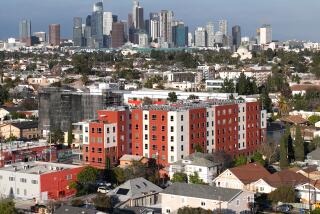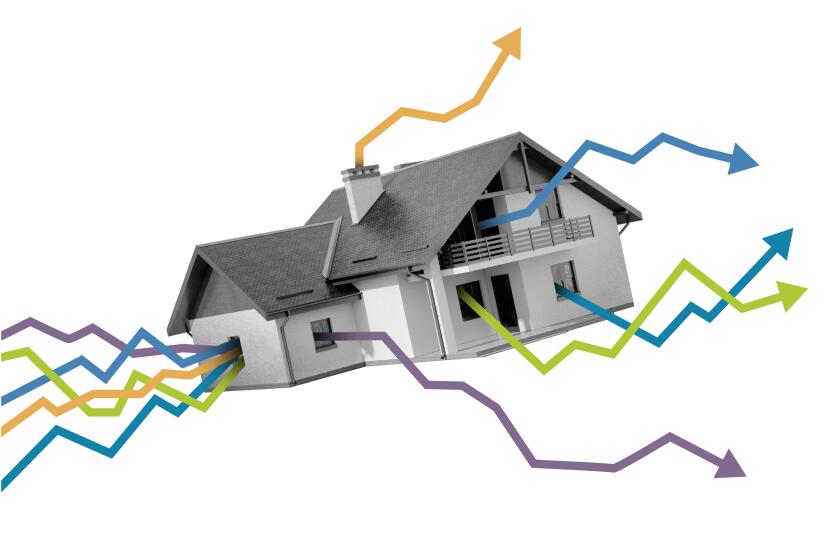Apartments Still Way of Life 50 Years Later
- Share via
The stock market crash and the ensuing Great Depression of the 1930s caused havoc among homeowners as well as businesses and created impetus for an alternative approach to living.
It was apartment house living--a new life style.
It was more affordable and provided a quick solution in a period when economizing in housing was unavoidable.
In California, this surge was prompted even more by the westward-moving thousands who were uprooted from the Midwest and East by loss of their homes and their jobs.
In 1936, the California Apartment Assn. was formed, at a time when more than half of the state’s population was living in apartments--in 1,209,547 dwelling units.
Significantly, today 44% of Californians still live in apartments, indicating the strength and preference for renting, affordability of home ownership notwithstanding.
During that summer 50 years ago, one newly arrived family of four from Massachusetts paid $12 a month for a Los Angeles duplex. Many family breadwinners then could only find part-time employment.
On a national basis, most apartment dwellers then paid a monthly rental of about $31, according to the apartment association’s files.
Today, throughout California, the average rent is about $390 a month, a whopping 1,111% jump in monthly rental costs, but overall only a 5% increase in the income-to-rent equation.
The 50th anniversary of the association’s founding was celebrated during a three-day conference which ended Saturday at the Newport Beach Meridien Hotel.
A look into the association’s records show that on April 30, 1933, the Los Angeles Times advocated that:
“No new apartment buildings should be constructed at this time. Los Angeles now has approximately 109,000 individual apartments housing 22% of the city’s family population. The city is underhoused in single- and double-family homes.”
A “new” concept then was the “garden apartment” complex, fostered by the large-scale rental housing division of the Federal Housing Administration. The Wyvernwood garden apartment buildings in the Olympic Boulevard-Soto Street area were cited as a model development.
The May, 1937, issue of Architectural Forum magazine reported that “modern and colonial (architecture) surpasses the erstwhile Spanish in popularity; stucco remains the predominant exterior. Kitchens must be tiled.
“Colored tile in bathrooms is going out. Corner windows are coming in. Steel casement windows are in style but must open outward to allow for Venetian blinds.”
The comforts afforded by the garden-style apartments included maximum sunlight, natural ventilation and the pleasing view of a landscaped courtyard. Such apartments contrasted sharply with the high-density, turn-of-the-century apartments that took up the entire site, right up to the sidewalk.
The new apartment house also offered private entries off front-yard areas, full basements in mostly two-to-seven-story structures. They also eliminated the embarrassment of neighbors and guests hearing the flushing noises caused by badly placed pipes and pumps. Prior to the advent of low-density apartments, private baths were not available to 15% of the tenants in typical apartment houses.
The Murphy bed, a hideaway, fold-down contraption that disappeared into a wall; fold-away ironing boards and dining tables and ice boxes were supplanted by sleeper sofas, stacked washer-dryer units, refrigerators, microwave ovens and trash-mashers and sound control.
Today, there are about 57 million American homeowners, epitomizing the great American dream, including those who opted--for economic and other reasons--for a shirttail cousin of apartment living, condominium ownership.
Tax reform legislation allowing, the apartment association sees a promising and satisfying future for owners, and an attractive life-style alternative for more millions of seemingly never-ending new Californians.
More to Read
Sign up for Essential California
The most important California stories and recommendations in your inbox every morning.
You may occasionally receive promotional content from the Los Angeles Times.






